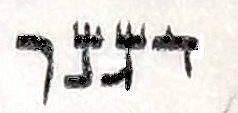Shaylos on some letters

B"H In this picture blitos (done as they were placing tagim on the letter) are descending from the Rosh of the Nun, Shinui Tzura or fixable? In this picture you can clearly see that the left regel of the Hei was touching the gag and it was scratched away (appears like a chok tochos or very close to it) could I assume that only when it was being written this happened and the letter was scratched and redone in a kosher way? (I don't think so, since there is no hint of scratch marks besides near the gag). The Nun Sofit has a tiny blita going to the left, although I think it is still fixable correct? THe Yud in the word yimeichem does not have a clear regel, although I think it is fixable by lengthening the regel yamin, correct?










